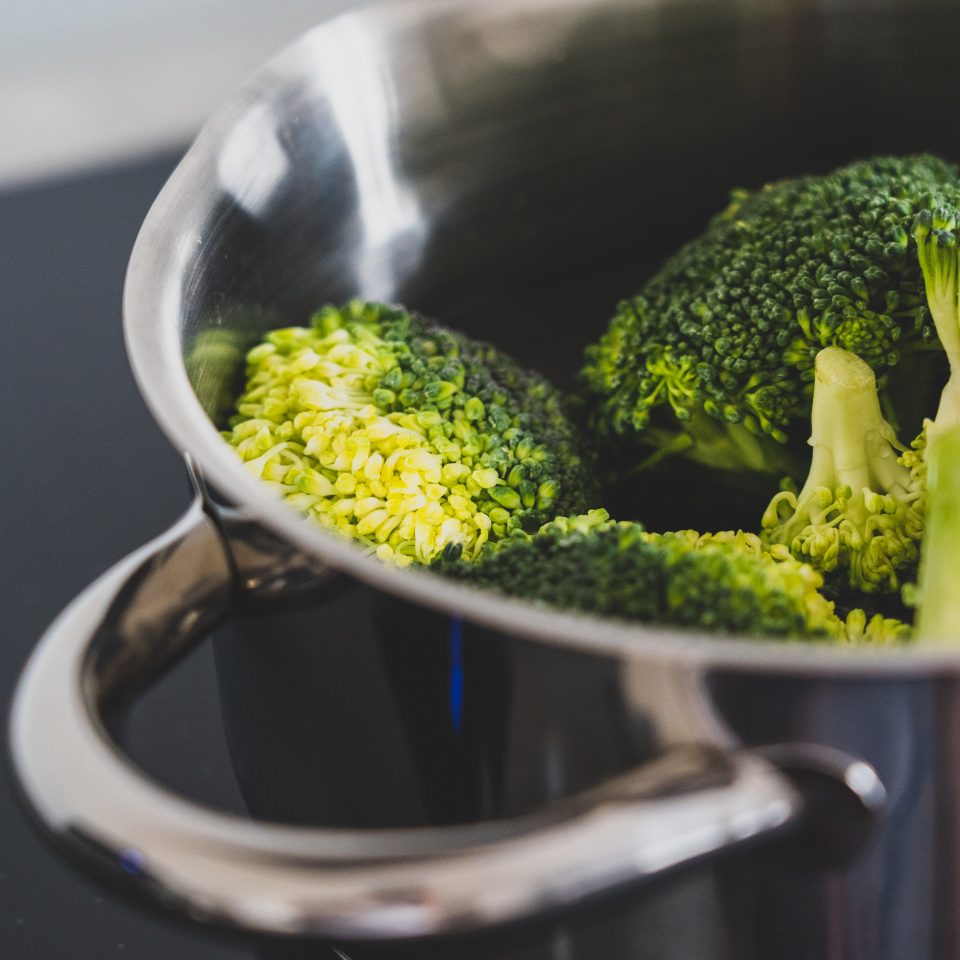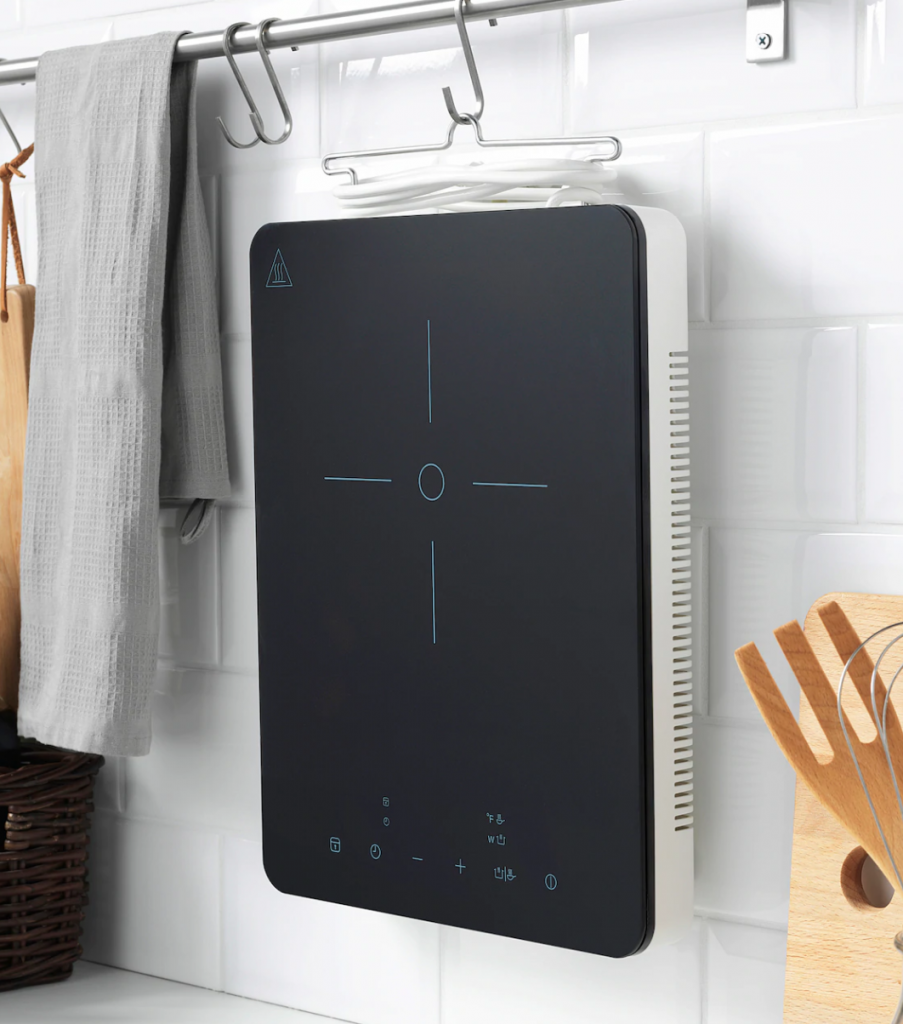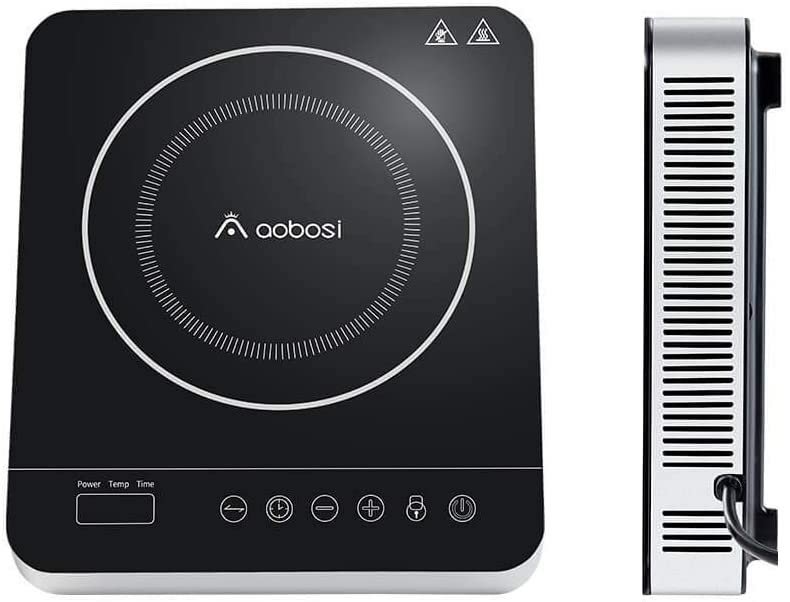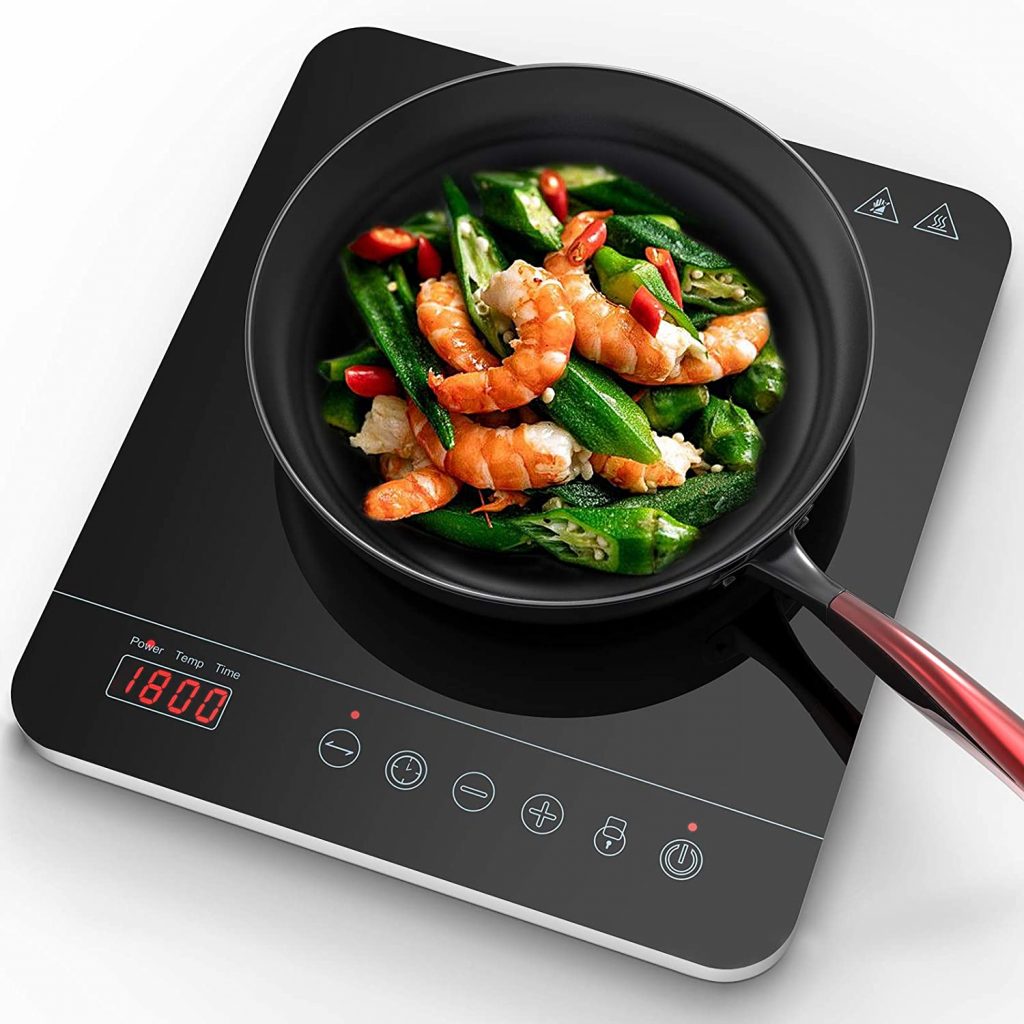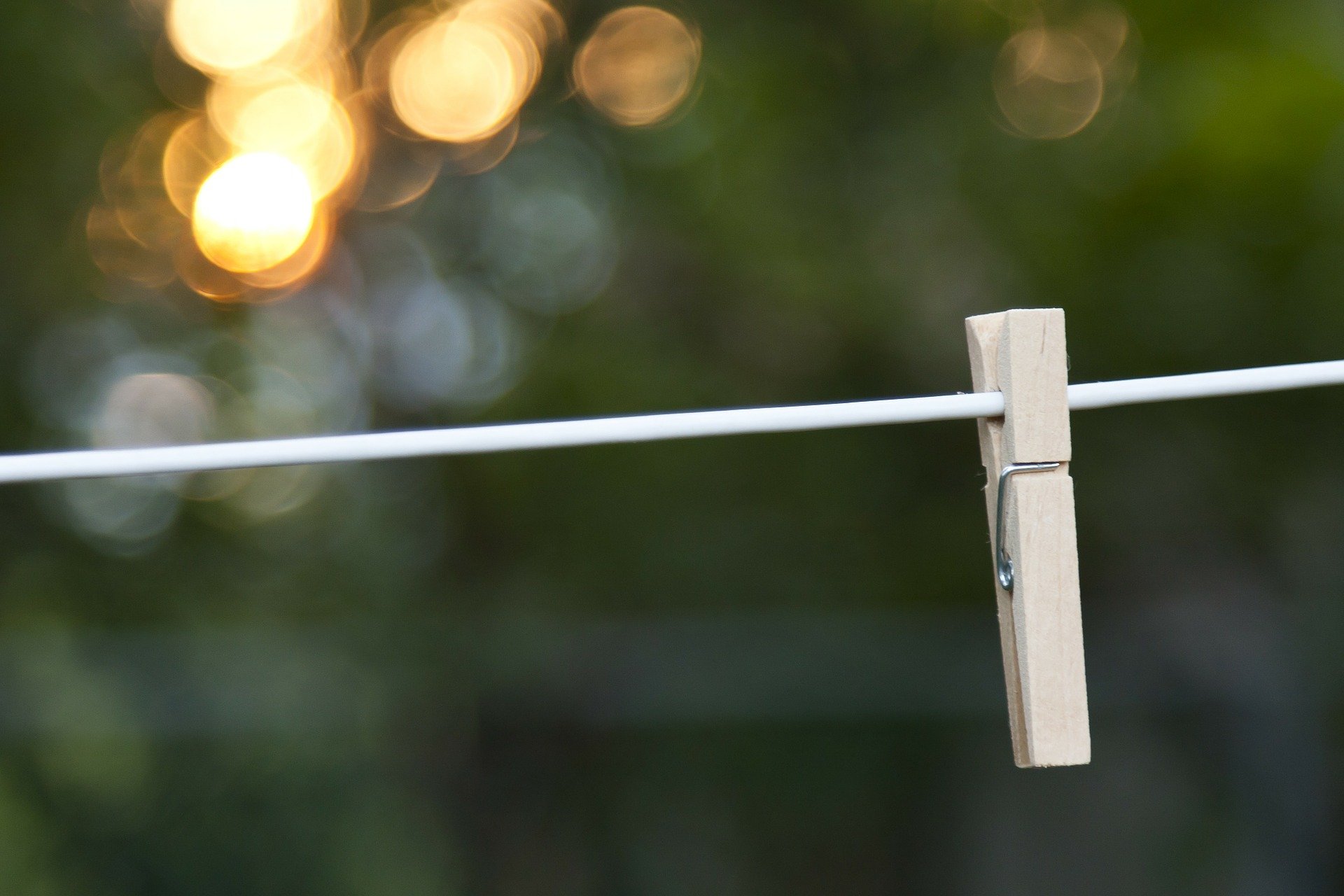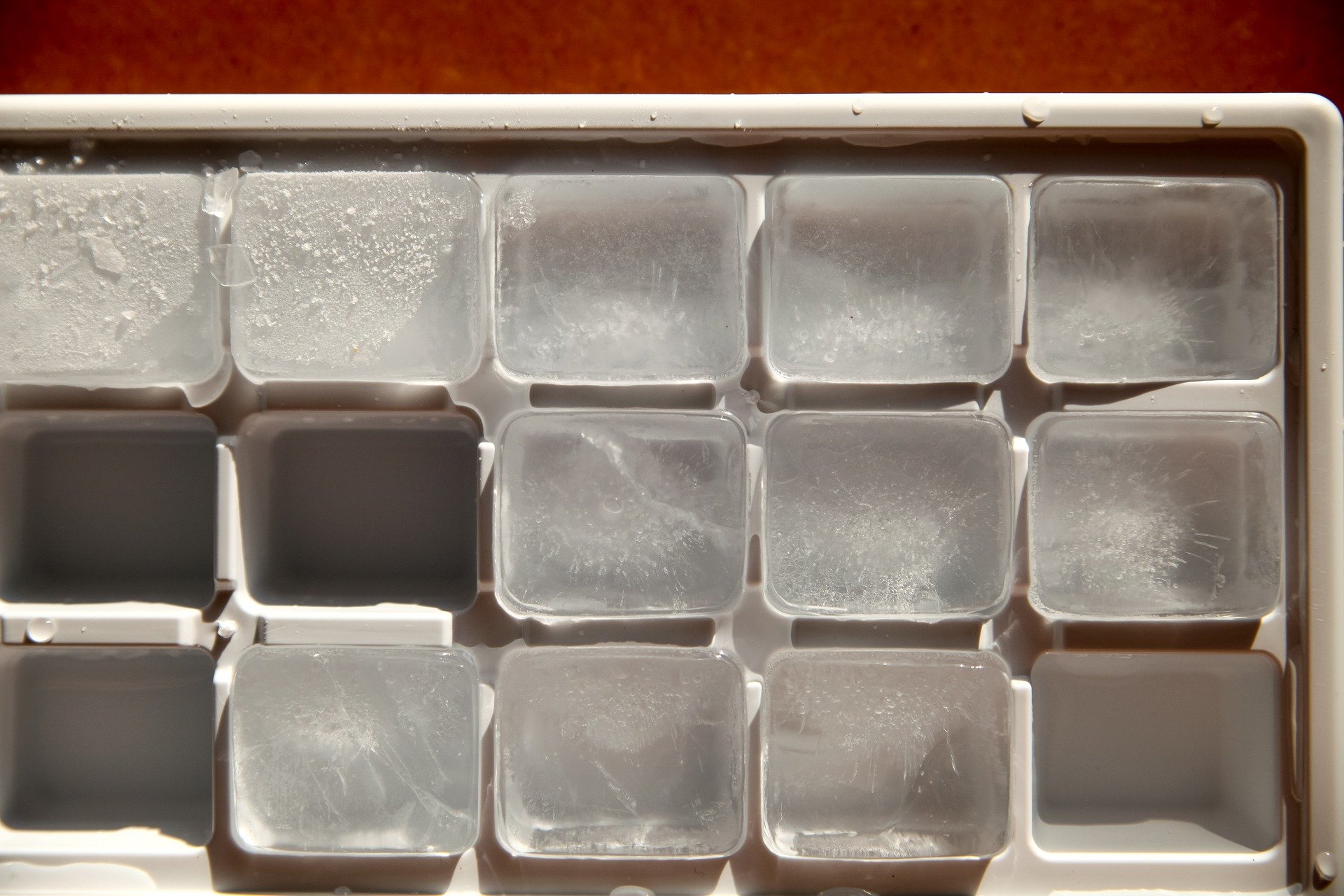Skoolies have (nearly) all of the amenities of home. You can probably imagine yourself roadtripping in one, using a surprisingly nice skoolie shower… but what about cooking?
Bus conversions are great but you are limited on power and space, and many conventional cooking methods range from energy inefficient to a pain to install to downright impossible to manage on a bus.
What to do? Enter the induction cooking plate…
How Induction Cookers Work
Induction cooking kind of sounds like magic, but it’s not. There is a property of electromagnetism that says that electric current (flowing electrons) will create a magnetic field, and vice versa.
Induction cooktops create an electric current, which creates a magnetic field. If something magnetic is on the cooktop, such as a cast iron pot, the magnetic field will make the electrons in the pot move. This movement creates heat, and heats up the pan.
Because this is done with magnetism, there is no open flame, and no air pollution from burning gas.
Why Induction Cookers are Great for Bus Life
The main reasons all boil down to convenience: these cookers are energy efficient, don’t require much (or any) installation work, are easy to clean, and don’t use much space.
Induction cookers are much more efficient than their electric and gas stove counterparts. 84% of the heat energy generated by induction cookers actually goes into cooking the food. Compare this with 65-70% for gas and electric stoves. The New York Times (among others) have pointed out how induction cooking is a new trend because of its eco-friendliness, but skoolies can take advantage of the relative power consumption savings too.
You will need 120V in your bus in order to use this. Most devices max out at about 1800W, although there are a range of power and heat settings on the glass cooktop.
Most induction cookers come with just a simple wall plug. They’re also about the size of a closed laptop. This means:
- No installation in your bus kitchen! Just set it on a flat surface and plug it in.
- Once you’re done, you can put it in a cabinet or in another storage spot and reclaim that precious countertop space.
Because these are standalone units, that means you can quickly wipe them down once you’re done using them. No weird gunk that builds up on stovetops, just a clean glass surface.
Easy to clean, small, lightweight, easy to install, affordable, and energy efficient… all great reasons to get an induction cooker for your skoolie cooking needs.
What’s Different About Cooking with an Induction Cooker
First of all, you need “special” cookware, but you probably already own one of these types of pans. Because induction cookers rely on the ferromagnetic properties of nearby metal to heat up food. That means you need one of the following types of pans:
- Cast iron
- Enameled cast iron
- Stainless steel (maybe)
*Not all stainless steel pans work. To test if a pan will be compatible with induction cooking, get a magnet and see if it sticks securely to the bottom of pot or pan you want to cook with.
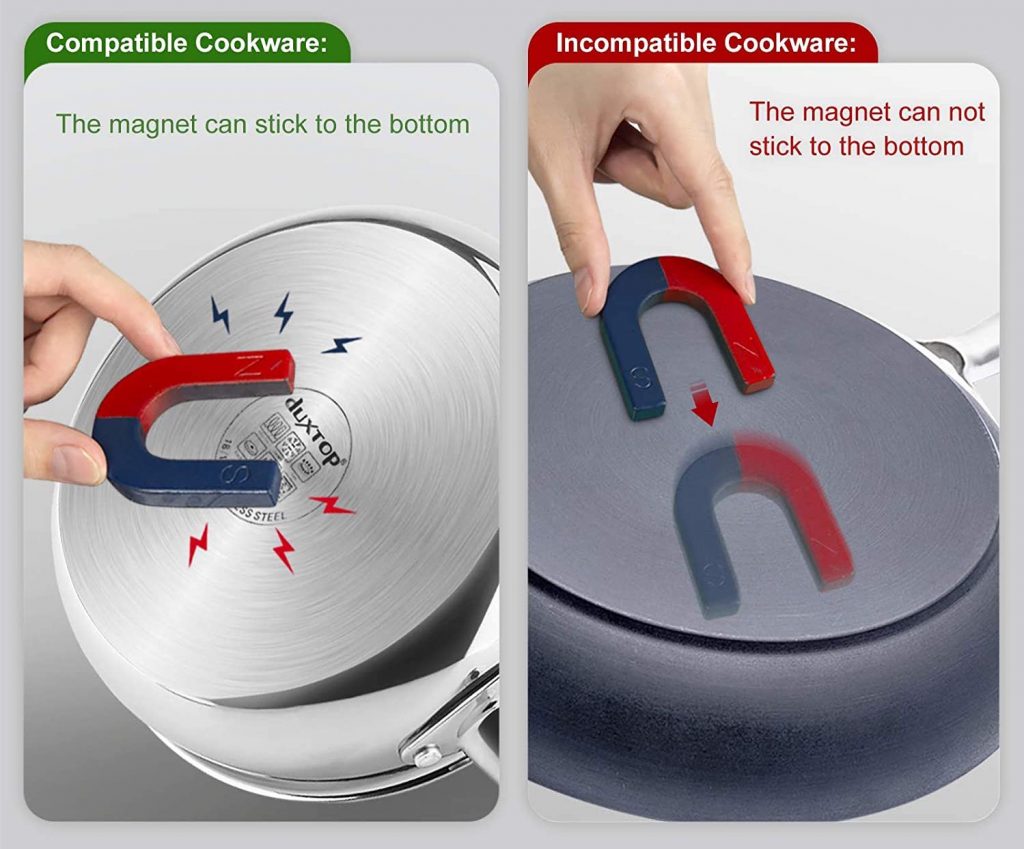
Aluminum, copper, and glass will not work unless the bottom is magnetic).
But what about actual cooking? The New York Times article referenced earlier points out that some chefs have trouble using induction cookers.
The pots heat up very quickly and this can throw some people off, especially when you’re used to things heating up or browning at a slower pace. These cookers absolutely excel at boiling things within minutes. But some cooking techniques, like searing, are very difficult to do with induction.
When we got our induction stovetop, we practiced cooking things at home first before taking it on the road. This allowed us figure out what types of recipes worked well, and what we struggled with. We’ve made rice, pancakes, breakfast sausage and a host of other things with it, and have used it to re-heat food.
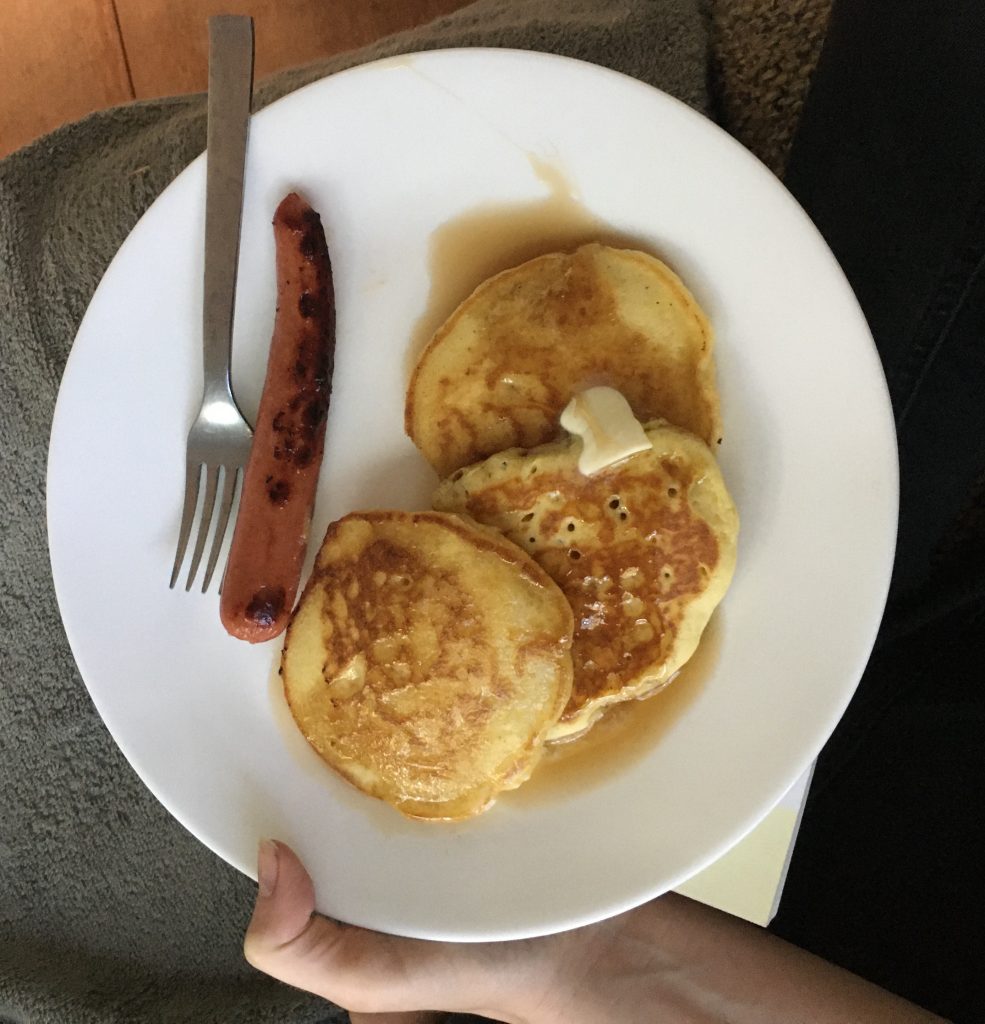
For things that don’t work out well with an induction cooker (like searing), you can use the same cast iron pans to cook over a campfire, too.
Aren’t Induction Stovetops Expensive Though?
You can buy ranges all the way up to $6000, but those are for big fancy kitchens. Most of the skoolie cooking options that we’re looking at here are around $50.
If you are near an IKEA, you can pick up this model for $50.
It does make a whirring sound when it runs but it’s not too noticeable, especially with other bus and people noises around. Once we’re done with it, we wipe it off and put it in the cabinet to free up counter space.
If you aren’t by an IKEA, there are plenty of options online. This one from Aobosi is roughly the same size and specs (roughly 14″ x 10.6″), and can be ordered from Amazon. Like the IKEA one, it has a wall plug and requires 120V.
If you need more stove space, they make double-wide portable induction cooktops too. Here’s an option that has two cooktops. This one is 23.6″ x 14.2″ in size and has an 4’9″ power cord.
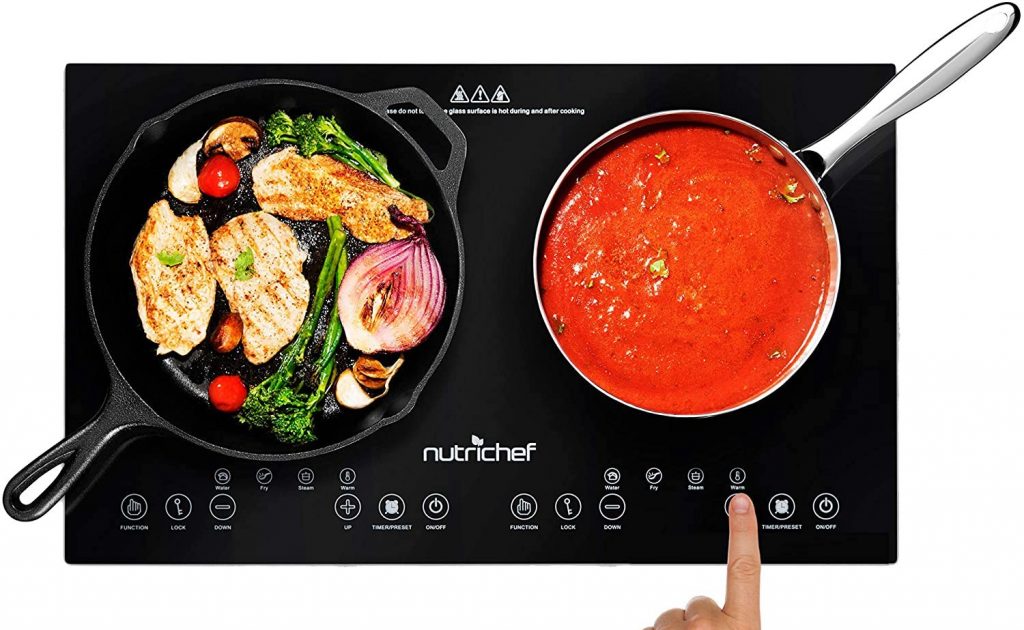
Induction Cooktops…
What do you think? Have you tried cooking in your skoolie with an induction cooker? How did it go?
